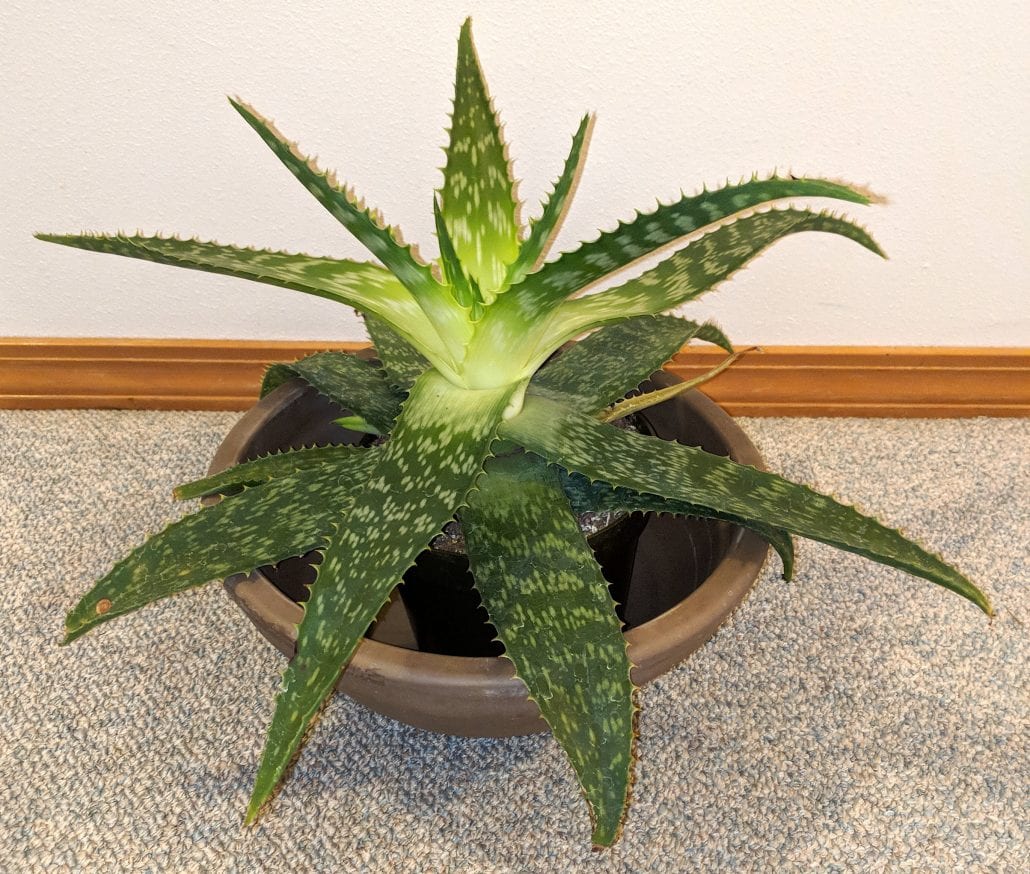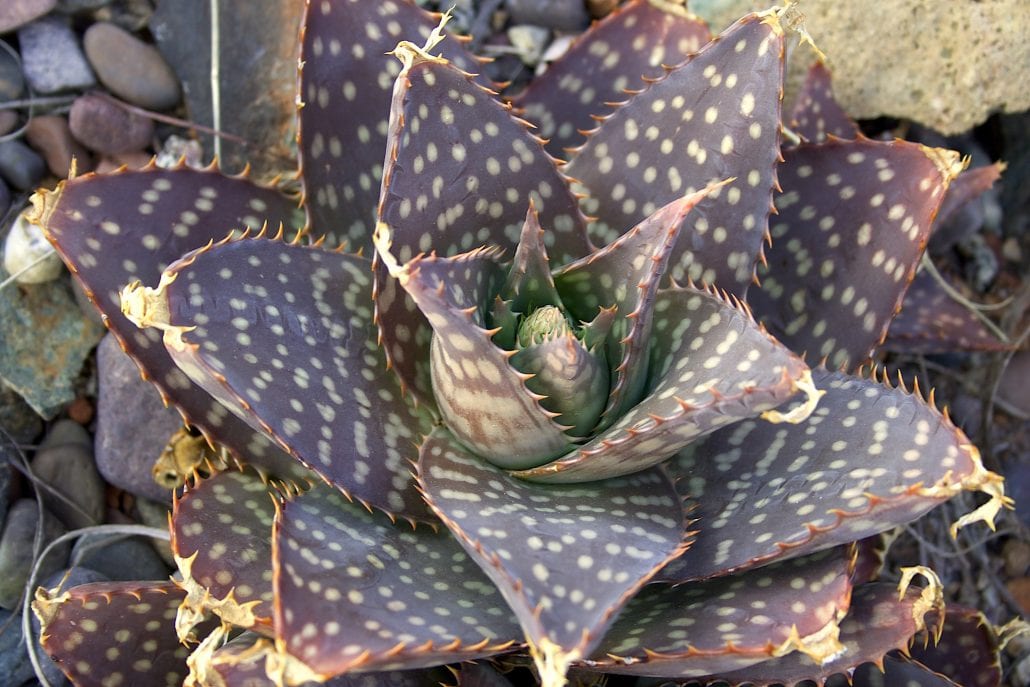Succulents (most plants for that matter) need light in order to flower. Sun is essential to photosynthesis, which creates energy and fuels new growth. All plants (actually, all living things) really want to reproduce, and for plants that means being robust enough to bloom. And because most succulents come from warm, dry climates, they require a lot of light.
If this aloe could talk, it would say, “I’m starved for light! I may not be able to bloom! Help!”

*Aloe maculata (A. saponaria)
Above: This is Aloe maculata growing indoors in the Seattle area. Although it’s healthy, it has flattened and elongated its leaves in order to expose as much of its surface as possible to light. The term for this is etiolation (et-ee-oh-lay-shun).

Aloe maculata (A. saponaria) in bloom
Above: This is how Aloe maculata looks with half a day of sun and half a day of bright shade. Even in these near-ideal conditions, the rosette and flower spikes lean in the direction of greatest light. Leaf tips have protected themselves from too much sun with reddish-brown pigmentation. (It’s similar to melanin, which causes skin to tan or freckle.)
Above: In all-day sun with minimal water, a similar specimen’s leaves have shortened to reduce evaporation. (Note how those in the first photo are much longer.) Sun exposure is somewhat harsh because it has reddened even more. The horticultural term for this is “stress,” which is aesthetically desirable because it enhances color and symmetry. This plant may be a bit too stressed—leaf tips have scorched and growth has slowed—but look closely: It’s in bud.
Indoors, set them near windows that face south or west. Don’t bother with north-facing windows, but if your windows face east, do collect and enjoy low-light lovers such as haworthias and gasterias. [
Read more]
*About Aloe maculata: Formerly known as
Aloe saponaria (soap aloe) because the gel in its leaves lathers like soap, it is one of the few potentially invasive succulents, capable of sending up new plants from horizontal roots a few inches below the soil surface. Baby plants can pop up three feet or more from the mother. I have a colony of
Aloe maculata in a rocky area of the garden where they can’t get into trouble, because I love the flowers, which are branching—unlike the columnar spikes of many other aloes. They don’t make good cut flowers, though, because cut stems ooze a mucilaginous gel.
Aloe maculata is not often found at nurseries in Southern CA because there’s minimal demand for it—it’s a common passalong plant. A similar aloe that is better behaved, not toothed, often sold in nurseries, and more prized in cultivation is
Aloe striata (coral aloe).
See it and others on my website’s Aloes page.
The post Why Doesn’t My Succulent Bloom? appeared first on Succulents and Succulent Garden Design | Debra Lee Baldwin.
from Succulents and Succulent Garden Design | Debra Lee Baldwin http://ift.tt/2DGurUK
via
IFTTT




No hay comentarios:
Publicar un comentario